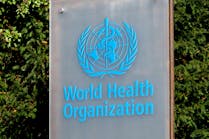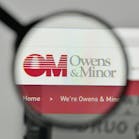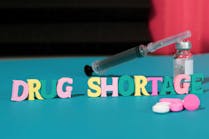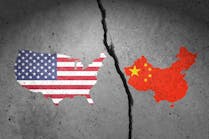Sutter Health’s Supply Chain team shares mindsets, motivations for success within their West Coast organization
The supply chain team at Sacramento, CA-based Sutter Health had their leadership mettle tested within the last few months as the departmental Vice President retired and two members of the C-suite (CEO and COO) are held by interim officers. Because he prefers to “give credit where credit is due” and share the wealth with colleagues, Lee Ayers, Senior Director, Supply Chain Operations, recruited several colleagues to contribute their leadership insights. Together, this team of six articulated with Healthcare Purchasing News Senior Editor Rick Dana Barlow what, how and why they do what they do to operate as an award-winning enterprise.
HPN: What’s the secret formula that makes a leader in supply chain management? How does your department implement that secret formula?
AYERS: “Purpose,” “Communication” and “Teamwork” are the defining ingredients of our secret formula, which propels our Supply Chain department to success. Purpose unites the team under a common goal, to care for our community (staff and patients). Strong and routine communication ensures our vision remains fresh and objectives are transparent. Finally, teamwork is encouraged at every turn to leverage our diverse perspectives in pursuit of unique solutions.
The next big trend in healthcare supply chain management will be...[fill in the blank]. Why?
The transition to home health is the next frontier for Supply Chain Management. We have seen more procedures migrate to outpatient and have also seen a shift in telehealth due to the pandemic. Our goal is to continue providing the right care, at the right place and at the right time. To accomplish this, improvements in technology will certainly be needed, but the Supply Chain will also need to enhance logistical practices to align the delivery of products and services with home health nurses at patient residences.
Some in the “C-suite” have criticized supply chain managers for being too technical and not strategic enough to “join their club.” Do you agree? How might supply chain’s pandemic response contribute to the viewpoint(s)? Why?
David Hamlet, Regional Director, Supply Chain: Supply Chain became especially critical as the demand for personal protective equipment (PPE) first increased around the world. For the first time, operations and logistics became the primary focus and the technical expertise of Supply Chain site leaders is in high demand as they scramble for solutions amidst global product disruption. Cost savings is still important, but in today’s environment, the question really becomes, “Will I get my product when I submit this order?” Since our Supply Chain has been so successful on many fronts, we are seeing a new level of respect and admiration for our profession.
How can consulting firms, distributors and GPOs contribute to the performance of your internal supply chain management expertise without overshadowing the department or usurping control?
I think the easy answer is to provide resources for project management activities, but the real value comes from pulling, analyzing, and presenting data in a manner where supply chain teams can make quicker and more informed decisions. We are currently using a consultant to help increase revenue through product charge capture, based on complex financial data. Furthermore, we leverage our distributor’s (Medline) warehouse analytics to prioritize scenarios where we need to find product substitutes. Finally, we routinely communicate with our GPO (Vizient) liaison to stay informed on Price Indexing, new tools, and overall marketplace trends.
What specific project did your department complete where you felt they exceeded your expectations?
My counterpart, Jen Carlson, set a Supply Chain cost savings target of $30 million for 2021, based on sound research and using data from Vizient’s price index tools. Her team diligently executed numerous high-dollar conversions across the most expensive and underperforming categories at Sutter Health. Leveraging our organization’s size and scale, they were able to negotiate new contract pricing with our preferred suppliers, while maintaining the utmost quality and safety for the organization. When the dust settled early this year, the Strategic Sourcing team proudly reported a savings of more than $60 million, two times the annual target!
In your opinion, what is your department’s toughest administrative challenge? How might you solve it?
Karen Kelly, Regional Director, Supply Chain: At the very onset of the COVID-19 pandemic, our biggest administrative challenge was working in siloed Supply Chain teams with the rapid deployment of new policies, procedures and product disruptions. We began having daily Supply Chain Huddles to keep the entire department up to date with all the changes and information about alternative products and strategies to address backorders. This meeting proved to be invaluable in providing a forum for problem solving, raising issues, connecting Operations with Purchasing, Business Intelligence, BioMed and subject matter experts from Pharmacy and Lab connecting the siloes to give way to a more System approach. The format and content continue to evolve, but it continues to be our go-to tool for addressing a universal administrative challenge: Consistent, clear and timely communications so the entire team is on the same page and working together. Through every challenge, our teams continued to put the patients at the center of everything we do.
What is your department’s toughest operational challenge? How might you solve it?
Tom Billalon, Regional Director, Supply Chain: Our toughest operational challenge is clearly product disruption, and a large part of this is outside of our scope to solve, given the pandemic and global supply chain delays. Although we have created a Distribution Control Tower, system job aids and an integrated reporting system, there remain a few things we can do to mitigate our organizational impact. At the tactical level, we are implementing standard work and an active daily management system to ensure performance matches the expected execution of tasks. At the strategic level, we are working to enhance our key performance indicators (KPIs) to include measurement of the “Perfect Order,” providing us insight into key trends that are preventing POs from fully executing. Using the Pareto methodology, we can identify and focus efforts on top detractors from a purchase order (PO) being on-time, in-full quantity and having correct invoicing.
What are your top three priorities for the remainder of 2022 and for 2023?
AYERS: Our three top priorities for the remainder of this year and into 2023 are stewardship, product delivery and technology upgrades. We will continue leveraging Vizient’s Price Index data and project management services to ensure we are achieving the maximum level of savings in product and service contracts. We will continue tweaking our non-traditional Distribution Control Tower (Stock Control), while also sharing our methodology across the industry. Finally, we are on the cusp of integrating a new dashboard analytics tool (BIRST), we are piloting a new point-of use (POU) system and will be selecting a new enterprise resource planning (ERP) system for implementation in 2024.
How does the CEO view your department? Does he or she see it as a strategic function or a support service? What resources can the department count on and will they come every year – and not just in response to clinician complaints or crises like the pandemic?
Jeremy Eaves, CEO, Sutter Shared Services: As proven during the pandemic, Sutter Health’s Supply Chain department remains a strategic function of the organization, influencing major financial and safety decisions from our senior leadership team. Regarding resource constraints, Supply Chain is not immune from inflation, rising product costs and labor shortages that are overshadowing all of healthcare, including our organization. We will continue to change how we operate and how we deliver care, further organizing and integrating our entire network around the patient, making critical investments and dramatically improving our total cost of care. The department will be resourced appropriately to meet the objectives of the organization and deliver on our community-focused mission into the future. I cannot thank Supply Chain enough for their contributions to the organization, and I am confident they will continue to be successful into the future. I am so proud of this mission-driven team.
What are some practical, common-sense ways that supply chain managers can keep patient satisfaction in mind as they’re performing their duties?
Stacy Jones, Regional Director, Supply Chain: It is Supply Chain’s goal to have the correct product on the shelf, in the right quantity, when the clinicians need it. Clinicians should not have to leave the bedside to locate supplies that are required for care of the patient. Some things Supply Chain Leaders can do to ensure we have the right supply, at the right time in the right quantity, is to optimize Periodic Automatic Replenishment (PAR) inventory according to patient census. Supply Chain leaders also need to be aware of fluctuations in patient census as well as changes in procedure schedules. It is important to engage with Clinical leaders frequently to discuss changes in practice or startup of new services and be able to swiftly make the necessary adjustments to ensure patient care is not impacted.
Read on:

Rick Dana Barlow | Senior Editor
Rick Dana Barlow is Senior Editor for Healthcare Purchasing News, an Endeavor Business Media publication. He can be reached at [email protected].





